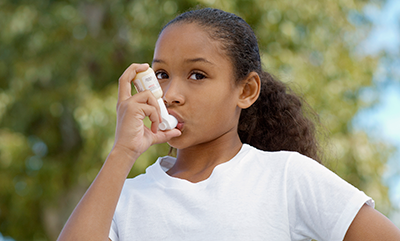Follow-Up Care Needed for Young Asthma Patients.
 Inconsistencies in diagnosis, logistical barriers, and misconceptions about the need for non-urgent follow-up care hamper efforts to treat young children with asthma, says a recent study by researchers from the School of Public Health.
Inconsistencies in diagnosis, logistical barriers, and misconceptions about the need for non-urgent follow-up care hamper efforts to treat young children with asthma, says a recent study by researchers from the School of Public Health.
The study, published in the Journal of Urban Health, relied on interviews with health center staff based in Boston. Focus groups participating in the study identified gaps in care, such as a lack of asthma knowledge due to inadequate opportunities to provide asthma education and primary-care follow-up after ED visits. Several studies indicate that parents are less likely to seek follow-up care if they perceive significant logistical barriers, including a lack of convenient appointments, a prolonged wait in their primary-care office, or transportation barriers.
Some clinicians reported needing more staff and space to provide adequate care to asthma patients. Some said they wanted to provide more education to patients and families, but often lacked the time and staff. They cited low “health literacy” among parents that could be complicated by treatment from multiple providers.
“Because many patients come in only for sick visits—often in a variety of settings (same-day sick clinic, the ED, etc.)—families encounter multiple distinct providers who give parents different labels for their child’s respiratory illnesses, leading to confusion and lack of comprehension of the seriousness of the asthma diagnosis,” the study says.
Among the improvements recommended in the study are the establishment of a registry of asthma patients/population health oversight providers in community health centers, and designating a clinic “asthma champion,” often a clinician or case manager who is familiar with community resources for asthma patients.
Studies have shown that black, Latino, and low-income youth suffer a disproportionate burden of asthma in the US. While the overall prevalence of asthma among children nationally is 13 percent, the prevalence is 11.7 percent for white, non-Hispanic children, 18.7 percent among black children, and 12.6 percent among Latino children. Asthma disparities in Boston are particularly pronounced among children under 5 years of age.
The study was led by Ellen Childs, a research scientist in health law, policy & management. Co-authors include Mari-Lynn Drainoni, associate professor of health law, policy & management and associate professor in the School of Medicine; and Margaret Laws, Megan Sandel, and Robyn Cohen from the pediatrics department at Boston Medical Center/MED.